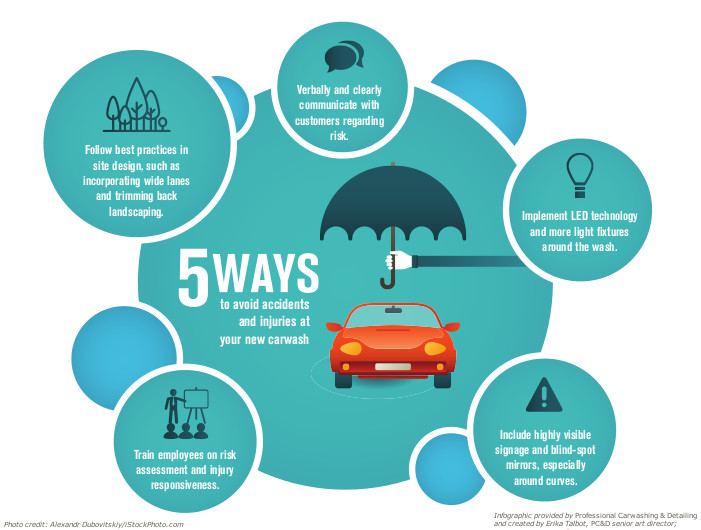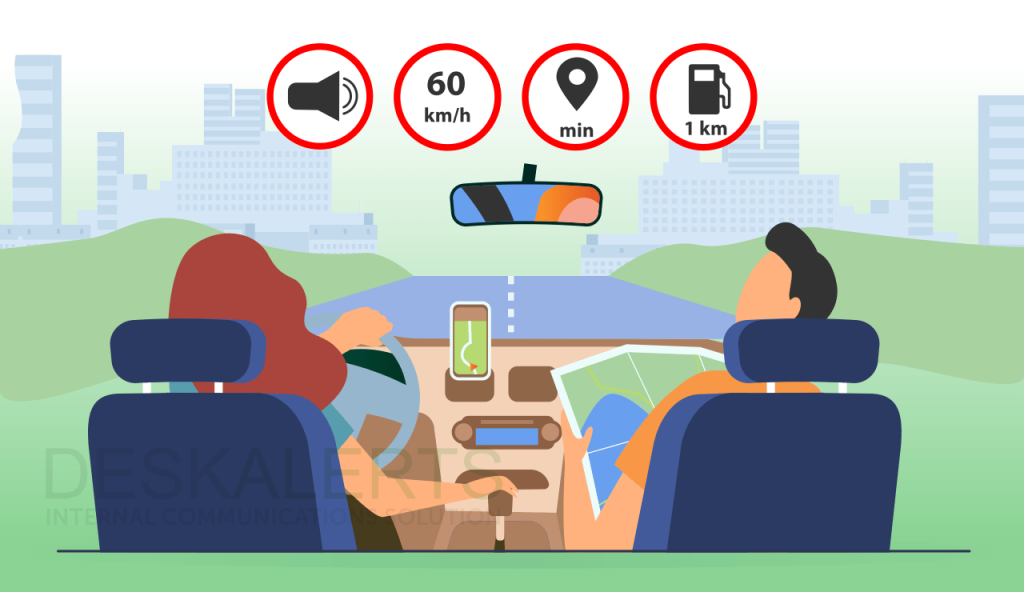**5 Ways to Reduce Road Accidents** Improving road safety involves better driver education, stricter traffic laws, and regular vehicle maintenance. Enhanced road infrastructure and public awareness campaigns are also crucial.
Road accidents claim countless lives every year. To tackle this issue, adopting effective strategies is essential. Better driver education ensures that people understand traffic rules and safe driving techniques. Stricter enforcement of traffic laws can deter risky behaviors like speeding and drunk driving.
Regular vehicle maintenance helps prevent mechanical failures on the road. Upgrading road infrastructure, such as better lighting and clearer signage, can significantly reduce accident rates. Public awareness campaigns can educate people about the dangers of distracted driving and the importance of seat belts. Implementing these measures can make roads safer for everyone.
Introduction To Road Safety
Road safety is vital for protecting lives. Every year, many people die in road accidents. Understanding road safety can help reduce these numbers. This section looks at the impact and causes of road accidents.
The Impact Of Road Accidents
Road accidents affect families, communities, and countries. Accidents cause injuries, disabilities, and deaths. They also lead to high medical costs. Below is a table showing the annual impact:
| Impact | Annual Numbers |
|---|---|
| Deaths | 1.3 million |
| Injuries | 50 million |
| Economic Cost | $518 billion |
Key Factors Behind Road Accidents
Understanding the main causes can help prevent accidents. Here are some key factors:
- Speeding: Driving too fast reduces reaction time.
- Distracted Driving: Using phones or eating while driving.
- Drunk Driving: Alcohol impairs judgment and coordination.
- Poor Road Conditions: Potholes and lack of signs can cause accidents.
- Vehicle Malfunctions: Faulty brakes or tires can be dangerous.

Credit: lifesciences.byu.edu
Enhancing Vehicle Safety
Enhancing vehicle safety is vital to reduce road accidents. Safer vehicles mean fewer accidents, injuries, and fatalities. Below are some effective ways to enhance vehicle safety.
Regular Maintenance Checks
Regular maintenance checks are crucial for vehicle safety. They help identify potential issues before they become serious. Schedule routine inspections for:
- Brakes
- Tires
- Lights
- Fluid levels
Ensure your vehicle’s brakes are in perfect condition. Check tire pressure and tread depth often. Functioning lights are essential for night driving. Maintaining the correct fluid levels keeps your vehicle running smoothly.
Advanced Safety Features
Modern vehicles come with advanced safety features. These technologies can save lives. Key features include:
- Anti-lock Braking Systems (ABS): Prevents wheels from locking during braking.
- Electronic Stability Control (ESC): Helps maintain control during turns.
- Adaptive Cruise Control: Adjusts speed to maintain a safe distance.
- Lane Departure Warning Systems: Alerts if you drift out of your lane.
- Automatic Emergency Braking (AEB): Applies brakes automatically to prevent a collision.
ABS improves control and reduces skidding. ESC helps you stay safe during sudden maneuvers. Adaptive Cruise Control maintains a safe following distance. Lane Departure Warning prevents unintentional lane changes. AEB reacts faster than human reflexes to prevent crashes.
Adopting Defensive Driving
Defensive driving can save lives. It helps reduce road accidents. This method teaches drivers to anticipate dangers. It also encourages safe driving habits.
Basics Of Defensive Driving
Defensive driving is about staying alert. It involves understanding road conditions. Drivers must keep safe distances. They should also use mirrors often.
Here are some key points:
- Always wear your seatbelt
- Follow speed limits
- Avoid distractions like phones
- Be aware of other drivers
- Stay calm and patient
Benefits Of Being A Defensive Driver
Defensive driving has many benefits. It can reduce accidents. This means fewer injuries and deaths.
| Benefit | Explanation |
|---|---|
| Fewer Accidents | Anticipate and avoid potential hazards |
| Lower Insurance Costs | Insurance companies reward safe drivers |
| Improved Safety | Protects drivers and passengers |
| Less Stress | Calm driving leads to a relaxed mind |
These benefits make roads safer. They also help drivers enjoy their journeys more.

Credit: www.carwash.com
Strict Adherence To Traffic Rules
Following traffic rules can save lives. It reduces road accidents and ensures safety. Obeying rules is not just for drivers. Pedestrians and cyclists must follow them too. Let’s explore two critical aspects of traffic rules.
Importance Of Following Speed Limits
Speed limits are set to protect everyone on the road. Driving too fast reduces reaction time. It increases the risk of accidents. Always check and follow the speed limit signs. They are there for your safety and others.
Consider these benefits of following speed limits:
- Reduced risk of accidents: Lower speeds mean better control.
- Less severe injuries: Crashes at lower speeds cause less harm.
- Better fuel efficiency: Driving at steady speeds saves fuel.
- Legal compliance: Avoid fines and penalties by following speed limits.
Dangers Of Ignoring Traffic Signals
Traffic signals guide the flow of traffic. Ignoring them can lead to accidents. Red means stop. Yellow means prepare to stop. Green means go.
Here are some dangers of ignoring traffic signals:
- Accidents at intersections: Ignoring red lights can cause collisions.
- Pedestrian injuries: Running red lights endangers people crossing the street.
- Confusion among drivers: Disobeying signals disrupts traffic flow.
- Legal consequences: Ignoring signals can lead to fines or jail.
Always watch and follow traffic signals. They keep everyone safe.
Promoting Pedestrian Awareness
Promoting pedestrian awareness is crucial to reduce road accidents. Pedestrians need to be aware of their surroundings. They should follow safety rules at all times. Educating pedestrians can save lives and prevent injuries.
Safe Crossing Practices
Safe crossing practices are essential for pedestrians. Always use designated crosswalks to cross the road. Look both ways before crossing. Never assume that drivers see you. Make eye contact with drivers before crossing. Teach children to cross safely. They should hold an adult’s hand.
Visibility Measures For Pedestrians
Visibility measures for pedestrians can prevent accidents. Wear bright or reflective clothing. This helps drivers see you better. Use a flashlight when walking at night. Stay on well-lit paths. Avoid using your phone while walking. Stay alert and aware of your surroundings.
| Visibility Measure | Purpose |
|---|---|
| Bright Clothing | Increases visibility during the day |
| Reflective Gear | Enhances visibility at night |
| Flashlight | Illuminates your path and signals drivers |
| Well-lit Paths | Ensures you are visible to drivers |
- Always stay alert.
- Make eye contact with drivers.
- Teach children safe crossing practices.
- Wear reflective clothing at night.
- Use designated crosswalks.
Impacts Of Alcohol And Drugs On Driving
Driving under the influence of alcohol and drugs poses severe risks. These substances impair judgment, slow reaction times, and reduce coordination. This makes it difficult for drivers to control their vehicles and avoid accidents. Understanding the impacts of these substances on driving can help in reducing road accidents.
Statistics On Dui Accidents
Drunk driving accidents cause thousands of deaths each year. Here are some alarming statistics:
- In the United States, almost 30 people die daily in DUI accidents.
- Alcohol-related crashes cost the U.S. over $44 billion annually.
- Drunk driving accounts for 28% of all traffic-related deaths.
Drug-impaired driving is equally dangerous. Studies show:
- Marijuana users are 25% more likely to be involved in a crash.
- Drivers with THC in their blood are twice as likely to cause fatal accidents.
Preventive Measures Against Dui
To reduce DUI accidents, several measures can be taken:
- Stricter Laws and Penalties: Enforce stricter DUI laws and penalties.
- Increased Sobriety Checkpoints: Conduct more sobriety checkpoints.
- Public Awareness Campaigns: Educate the public on DUI dangers.
- Promote Designated Drivers: Encourage the use of designated drivers.
- Technology Solutions: Use ignition interlock devices for offenders.
Implementing these measures can significantly decrease DUI-related accidents. They ensure safer roads for everyone.
Role Of Government And Policy
The government plays a crucial role in reducing road accidents. Strong policies and regulations can save lives. Effective laws and public awareness are key measures.
Implementation Of Stricter Laws
Enforcing stricter traffic laws helps reduce road accidents. Governments can impose heavy fines for traffic violations. This includes speeding, drunk driving, and using mobile phones while driving.
Key measures include:
- Speed limits
- Zero tolerance for drunk driving
- Mandatory seat belts and helmets
Strict penalties deter people from breaking the rules. This leads to safer roads for everyone.
Public Awareness Campaigns
Public awareness campaigns educate people about road safety. These campaigns can highlight the dangers of reckless driving. They also inform about the importance of following traffic rules.
Effective campaigns often use:
- Television and radio ads
- Social media posts
- Billboards and posters
Educating the public is crucial for changing behavior. Awareness leads to more responsible drivers on the road.

Credit: www.forbes.com
Harnessing Technology For Road Safety
Technology plays a huge role in making our roads safer. With new inventions, we can reduce road accidents and save lives. Here are some ways technology is helping.
Innovations In Traffic Management
Traffic management systems are getting smarter. They use sensors and cameras to monitor traffic flow. This helps in reducing traffic jams and accidents.
- Smart Traffic Lights: Adjusts light timing based on traffic.
- Real-Time Traffic Updates: Provides drivers with current road conditions.
- Automated Speed Enforcement: Cameras capture speeding vehicles.
These innovations help in keeping the traffic smooth and safe.
The Future Of Autonomous Vehicles
Autonomous vehicles are self-driving cars. They use advanced technology to navigate roads safely.
- Advanced Sensors: Detects obstacles and other vehicles.
- Artificial Intelligence: Makes decisions in real-time.
- Communication Systems: Cars talk to each other for safer driving.
These cars can reduce human errors, which cause most accidents.
Summary Table of Key Innovations:
| Technology | Benefits |
|---|---|
| Smart Traffic Lights | Reduces traffic jams |
| Real-Time Traffic Updates | Informs drivers of road conditions |
| Automated Speed Enforcement | Captures speeding vehicles |
| Advanced Sensors in Autonomous Vehicles | Detects obstacles |
| AI in Autonomous Vehicles | Makes real-time decisions |
These technologies play a key role in making our roads safer.
Frequently Asked Questions
What Are The Five Ways Of Preventing Accidents?
1. Follow safety protocols and guidelines. 2. Use appropriate protective equipment. 3. Maintain clean and organized workspaces. 4. Provide regular safety training. 5. Conduct routine equipment inspections.
What Are The Four Ways Of Reducing Accidents?
1. Implement strict safety protocols. 2. Conduct regular training for employees. 3. Maintain equipment properly. 4. Promote a culture of safety awareness.
Which Of The Following Is Most Likely To Reduce Traffic Accidents?
Implementing stricter traffic laws and enhancing driver education are most likely to reduce traffic accidents. Consistent law enforcement and improved road infrastructure also help.
What Factors Will Decrease The Impact Of A Road Accident?
Wearing seat belts, maintaining vehicle speed limits, and avoiding distractions can decrease the impact of road accidents. Regular vehicle maintenance and following traffic rules also play crucial roles.
What Are Common Causes Of Road Accidents?
Distracted driving, speeding, drunk driving, reckless driving, and poor weather conditions are common causes of road accidents.
How Can Distracted Driving Be Prevented?
Avoid using mobile phones, eating, or engaging in other activities that take your focus off the road.
Why Is Speeding Dangerous?
Speeding reduces reaction time and increases the severity of crashes, making it a major road accident risk.
What Role Does Drunk Driving Play In Accidents?
Drunk driving impairs judgment, coordination, and reaction times, significantly increasing the likelihood of road accidents.
Conclusion
Reducing road accidents requires collective effort and awareness. Implementing these five strategies can save lives and prevent injuries. Stay vigilant, follow traffic rules, and maintain your vehicle. Together, we can create safer roads for everyone. Prioritize safety and encourage others to do the same.
Let’s make our roads accident-free.



